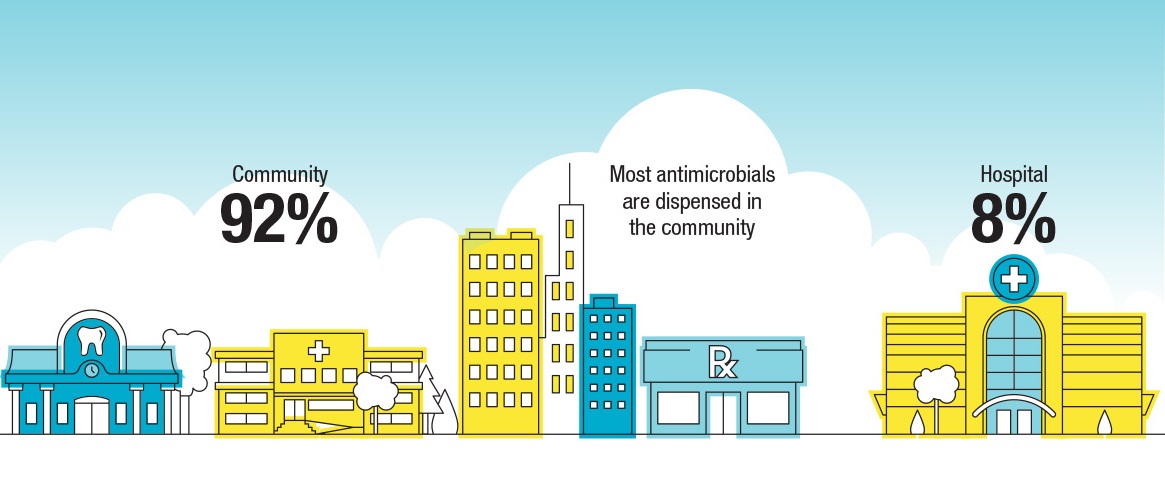Antibiotic use in Canada: Preserving antibiotics now and in the future
Chief Public Health Officer of Canada's Spotlight Report 2019
Healthcare providers recommend an antibiotic prescription most often for common illnesses, such as respiratory and urinary tract infections in adults or for ear infections in children.Footnote 2
In 2017 alone, Canadians filled over 24 million antibiotic prescriptions, primarily in community pharmacies.Footnote 2 However, we do not know how many of these prescriptions in Canada are provided unnecessarily for illnesses such as the common cold, flu (influenza), or viral sore throat.Footnote 26
In the United States, national data suggest that 30% of oral antibiotics are unnecessary.Footnote 27

Figure 3 - Text description
The figure illustrates the disproportional use of antibiotics and other antimicrobials in the community versus hospital settings:
- 92% of all human antibiotics are dispensed in the community, whereas
- 8% are used in hospitals
General and family practitioners prescribe about 65% of antibiotics in the community. Dentists, nurses and pharmacists prescribe about 22%. Other medical specialists prescribe the rest.Footnote 26
More antibiotics are prescribed to Canadians over age 60 than to younger people.Footnote 2 Antibiotic use varies across Canada, with the highest prescription rates being observed in Prince Edward Island and Newfoundland and Labrador combined, and the lowest in the territories, followed by Quebec and British Columbia in 2017.Footnote 2

Figure 4 – Text description
The figure highlights the fact that most antibiotics in the community are being prescribed by certain groups of prescribers:
- general and family practitioners prescribe about 65% of antibiotics
- dentists, nurses and pharmacists prescribe about 22%
- other medical specialists, such as dermatologists and pediatricians, prescribe the rest (13%)
Page details
- Date modified: